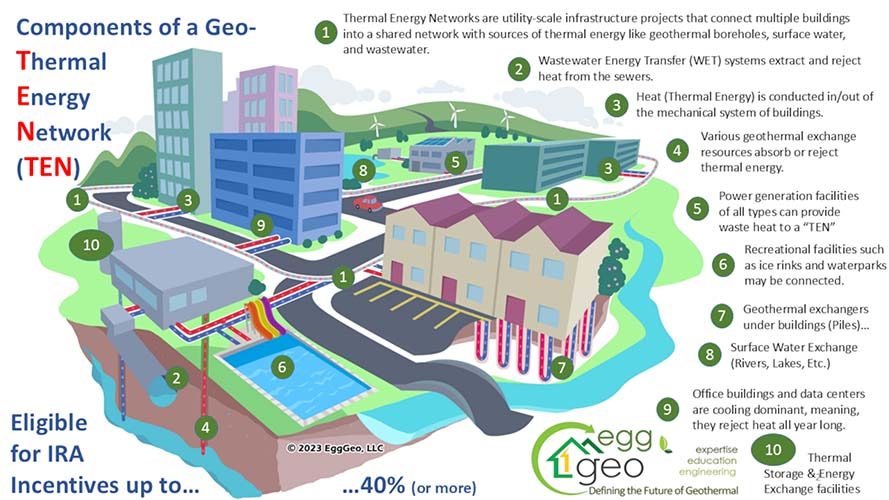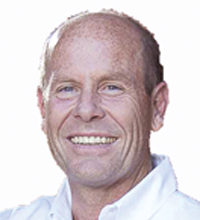Thermal Energy Networks: Bridge Technology for Sustainable Energy Solutions
Five significant gatherings across various locations highlight the growing importance of geothermal technology in urban energy systems.

Geothermal Rising (www.geothermal.org) had its inaugural Thermal Energy Network Symposium in Rochester, Minnesota, in March 2024. It was quite a success.
2025 was a different story altogether. We attended five thermal energy network (TEN) gatherings in 14 days (Jan. 30-Feb. 13), starting in Cambridge and ending in Dallas:
- HEET MIT Thermal Energy Networks Conference, Jan. 30-31 at MIT
- IDEA TENs Conference, Cambridge, Feb. 5
- Geothermal Rising TEN Symposium, MIT, Feb. 6-7
- Thermal Energy Network talk at AHR in Orlando, Florida, Feb. 11
- TENS Talk at UA in Dallas, Feb. 12
For some clarity, the distinction between high-temperature geothermal (more than 300 F) and low-temperature geothermal (more than 40 F) is becoming increasingly blurred. TENs can use waste heat from power plants, combined heat and power systems, data centers, wastewater, subways and much more.
This thermal energy powers heat pumps within communities, effectively bridging the geothermal universe. By integrating these processes, TENs unify diverse energy systems under one comprehensive technology — geothermal energy.
A primer on TENs
Energy networks are foundational to modern infrastructure, with the electrical grid serving as a prime example of their long-term evolution. Traditionally, energy pipelines have carried steam or natural gas, but a new generation of networks is emerging — those that rely on water.
Hydronic systems, which use water as the medium for carrying thermal energy, are among the most efficient methods available. This is why heating and cooling distribution systems commonly employ hydronic loops, ranging from condenser water loops near ambient temperatures to insulated chilled and heated water loops.
Just as water is the best method available to move thermal energy through a building, it is also the favored method to carry energy through a thermal energy network or even through an entire city. Piped thermal energy makes good sense.
Ambient energy exchange — whether from the air or the earth — remains largely unregulated, though excavation and drilling pose regulatory challenges. Still, this energy-sharing model, often called fifth-generation district heating and cooling, offers a path toward sustainable urban energy solutions.
By leveraging shared resources and efficiently connecting diverse energy consumers and producers, TENs represent a critical innovation in the drive for energy independence and carbon reduction.
TENs history and 2025 update
TENs developments signal a transformative leap toward mainstream adoption of this innovative technology. The year 2025 has already underscored the momentum behind TENs through several key conferences and symposiums, highlighting rapid industry collaboration and advancements.
The HEET MIT Thermal Energy Networks Conference in late January kicked off discussions about the evolving role of TENs in bridging high-temperature geothermal and low-temperature applications. Following this event, gatherings such as the IDEA TENs Conference and the Geothermal Rising TENs Symposium in early February emphasized scaling TENs deployments.
This surge in activity reflects the critical role TENs play in harnessing waste heat from diverse sources such as power plants, data centers and wastewater facilities. These systems distribute thermal energy through hydronic networks, delivering high-efficiency heating and cooling while providing robust decarbonization solutions.
Acting as fifth-generation networks, TENs seamlessly exchange ambient thermal energy to meet varied demands, particularly in dense urban environments.
The origination of TENs in New York marked a pivotal moment in their adoption. Years of educating legislators and design professionals led to a breakthrough on July 5, 2022, when Gov. Hochul signed the Utility Thermal Energy Networks and JOBS Act into law (https://bit.ly/3ESR2lf). This legislation directed the Public Utilities Commission to fund the design and construction of several projects across utility territories, laying the groundwork for large-scale deployment.
Organizations such as the Long Island Geothermal Association (now the New York Geothermal Organization) and the United Association pipe trades union played a critical role in advocating for this legislation, presenting the concept to the New York City Council as early as 2013. By 2022, green activist groups and trade unions had successfully pushed the legislation through in record time, setting a national precedent.
Meanwhile, in Massachusetts, powerful grassroots organizations such as Mothers Out Front (www.mothersoutfront.org) and the Home Energy Efficiency Team (www.heet.org; HEET) drove momentum for TENs. Their groundbreaking work identifying gas leaks under Boston streets, coupled with a study by Buro Happold, demonstrated that leaky natural gas piping could be replaced with thermal energy networks.
This effort gained significant traction when it made front-page headlines in the Boston Globe. Eversource, one of the state’s largest utilities, received approval to install the nation’s first modern TEN in Framingham, Massachusetts, further advancing the concept. This milestone was celebrated through site visits and discussions at the Thermal Energy Networks Symposium hosted by HEET, Geothermal Rising, and the Building Decarbonization Coalition (www.buildingdecab.org).
The legislative progress and strategic partnerships in New York and Massachusetts demonstrate the growing collaboration between private entities, advocacy groups and government bodies. These efforts solidify TENs as a critical bridge technology, seamlessly integrating geothermal and advanced thermal networks to decarbonize urban energy systems.
Looking ahead, TENs adoption requires continued unity among industry leaders, policymakers and community advocates. Events such as the HEET MIT Conference and ongoing initiatives reflect the shared mission to scale TENs and redefine how cities exchange energy.
By combining legislative achievements, grassroots efforts and technological innovation, TENs are positioned to become a cornerstone of urban sustainability, ensuring long-term resilience and energy independence.
Moving geothermal ahead with poise and purpose
A unified geothermal industry will be better positioned to drive innovation and change. Consolidated efforts will streamline regulations, improve adoption rates and enable more robust infrastructure investments. TENs offer a scalable solution that bridges high-temperature geothermal applications with low-temperature uses, creating opportunities for increased collaboration and resource sharing.
By pooling expertise and focusing efforts, the industry will expand the deployment of technologies like TENs, demonstrating geothermal energy’s versatility and impact on decarbonization.
Moreover, a coordinated approach will strengthen advocacy, ensuring governments, utilities and the public fully understand geothermal energy’s immense potential as a reliable, sustainable solution.





